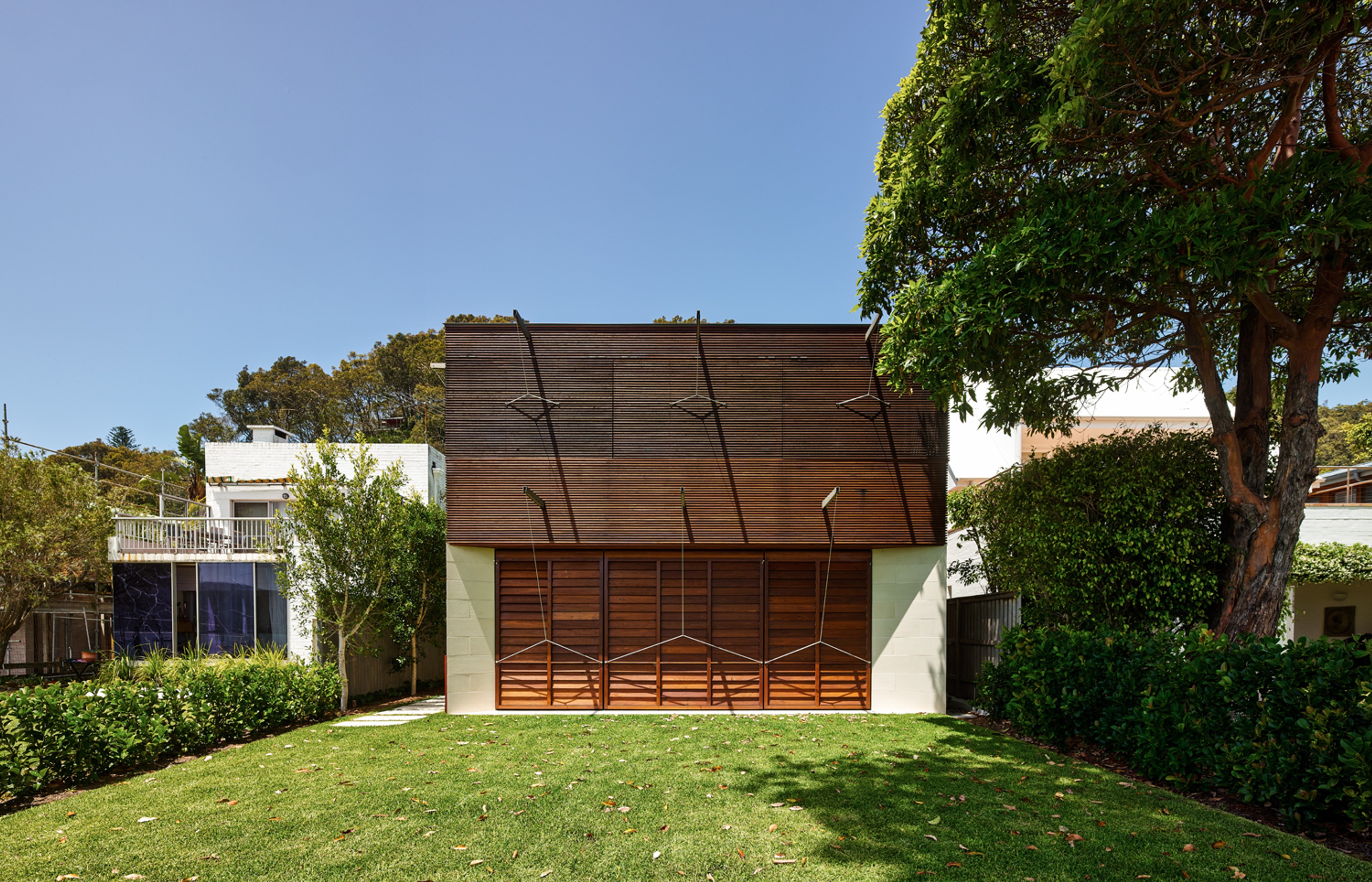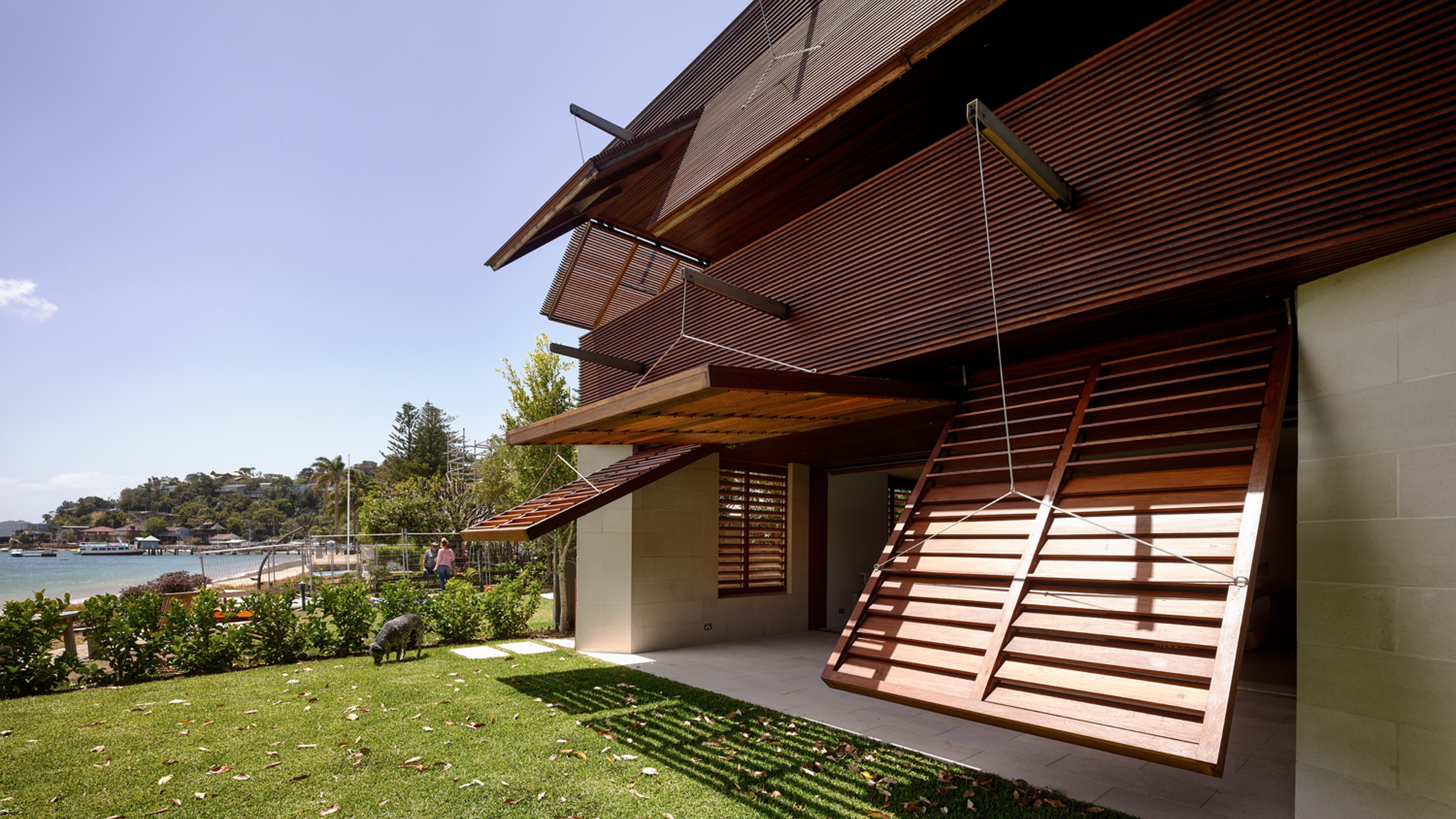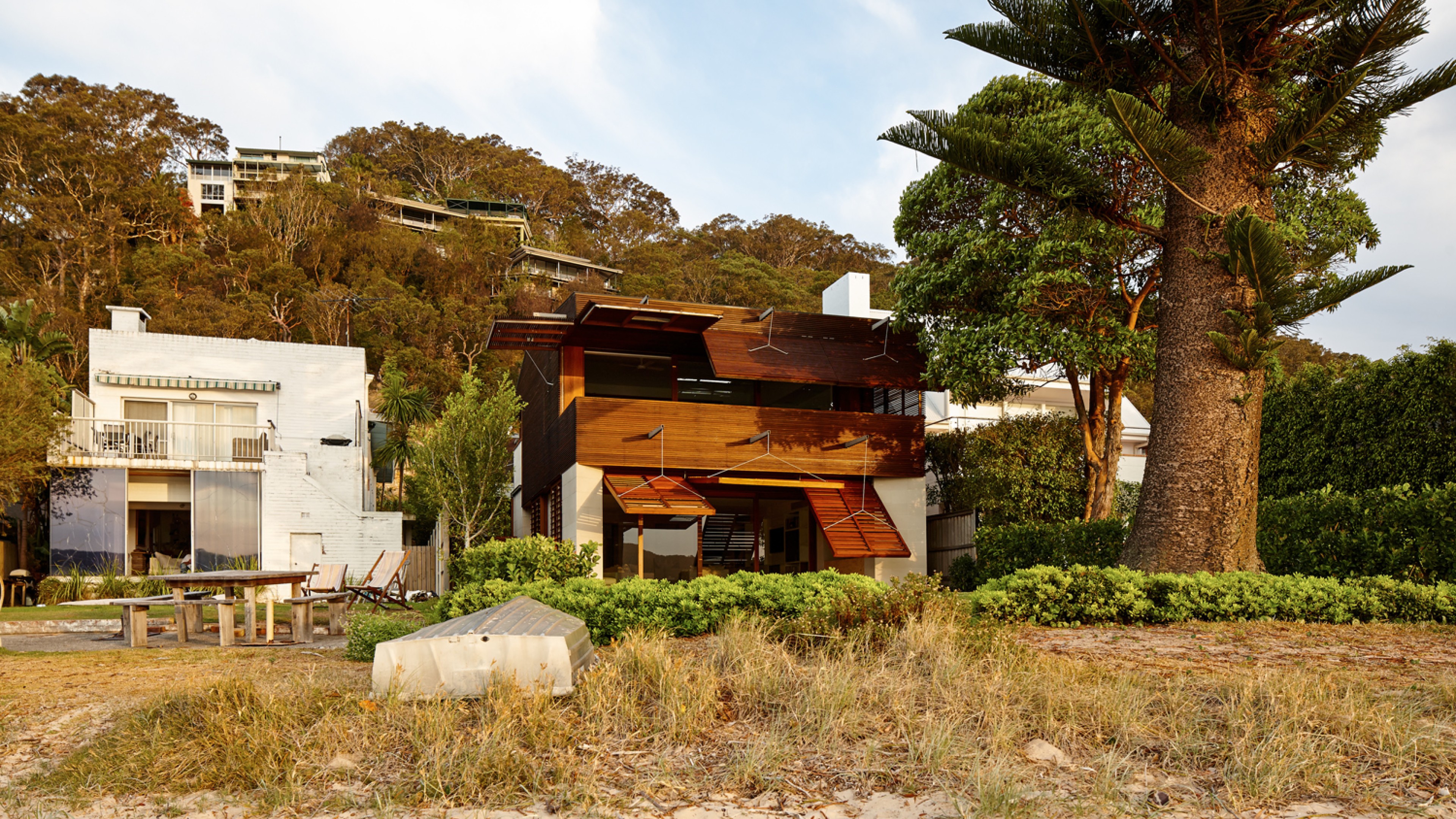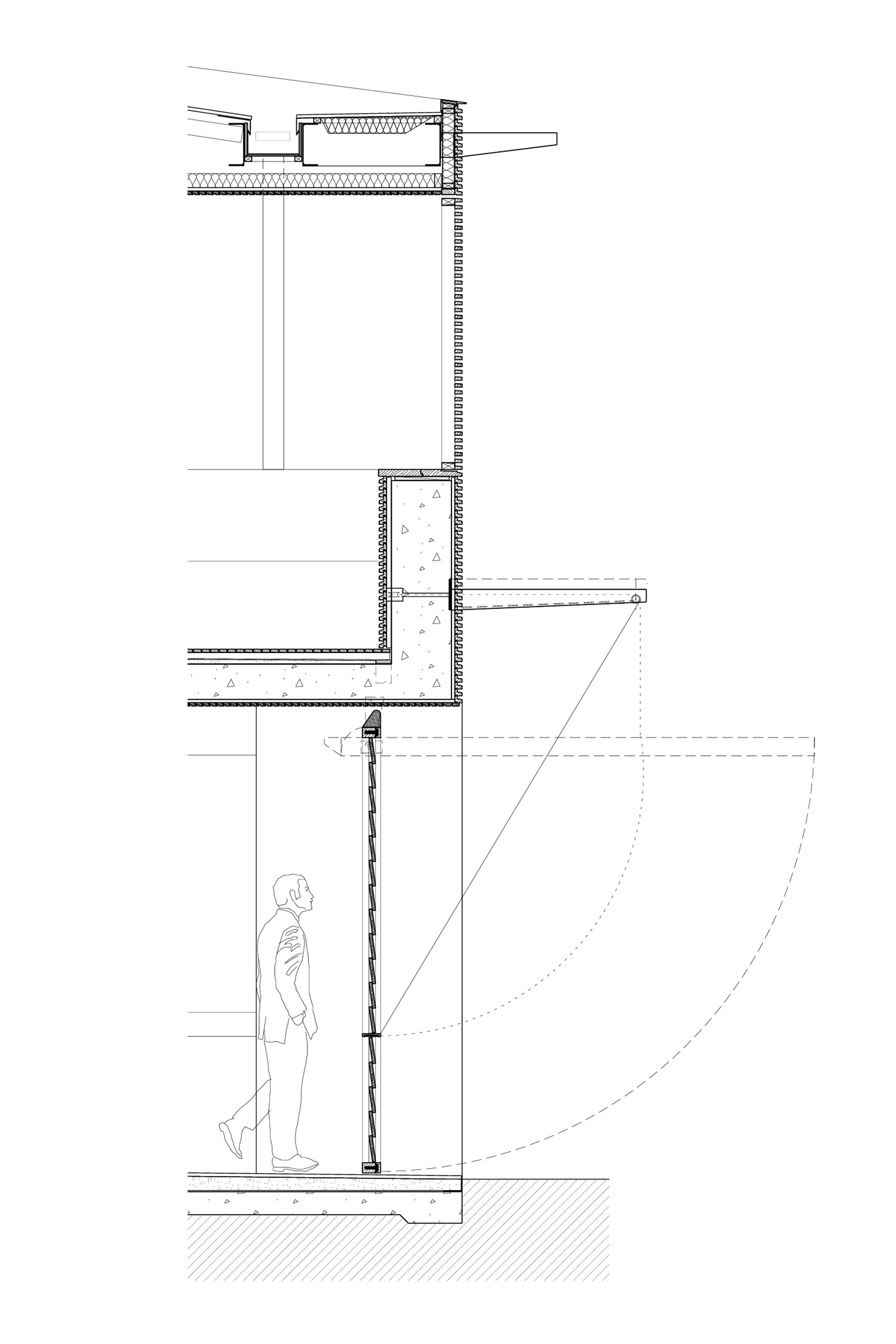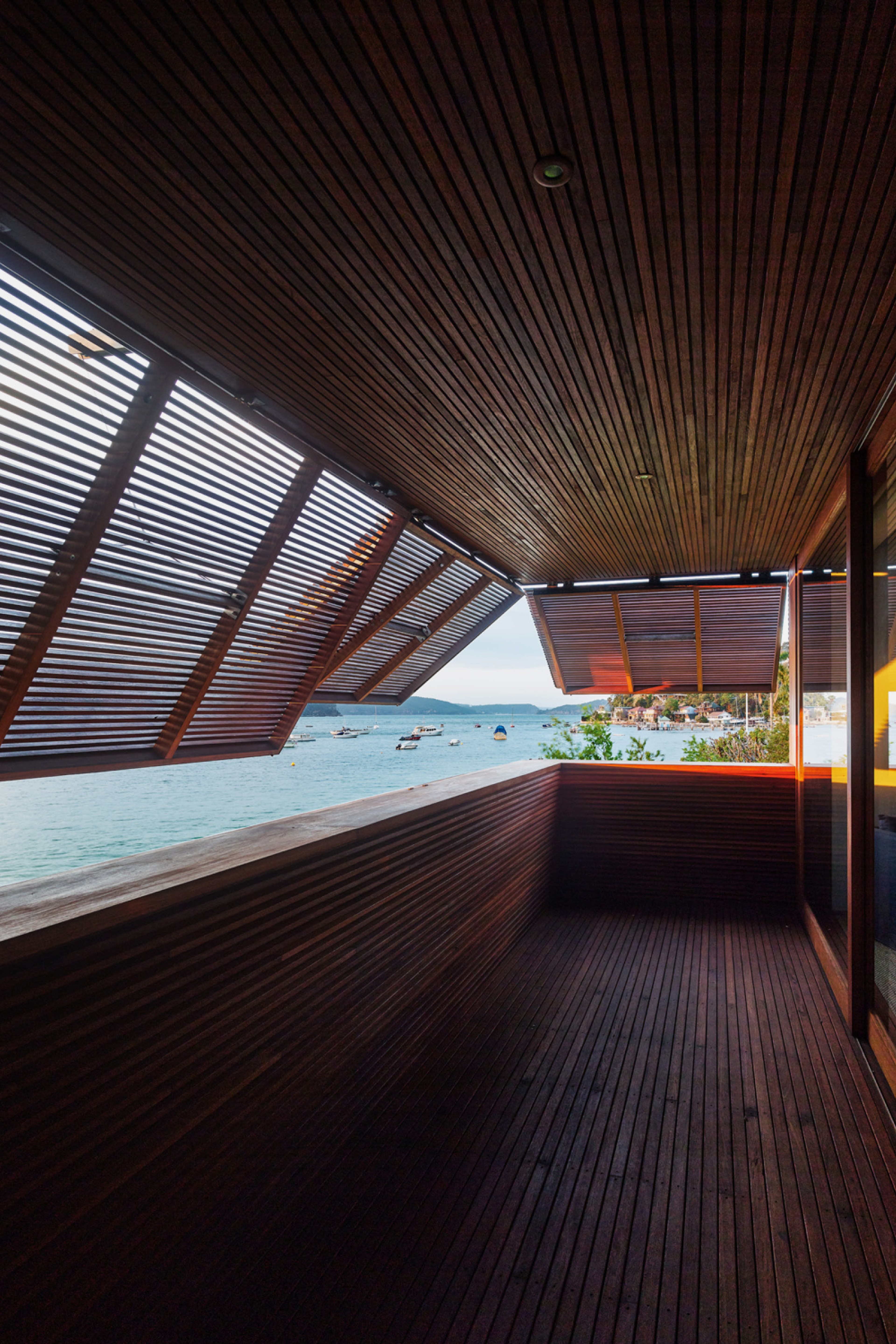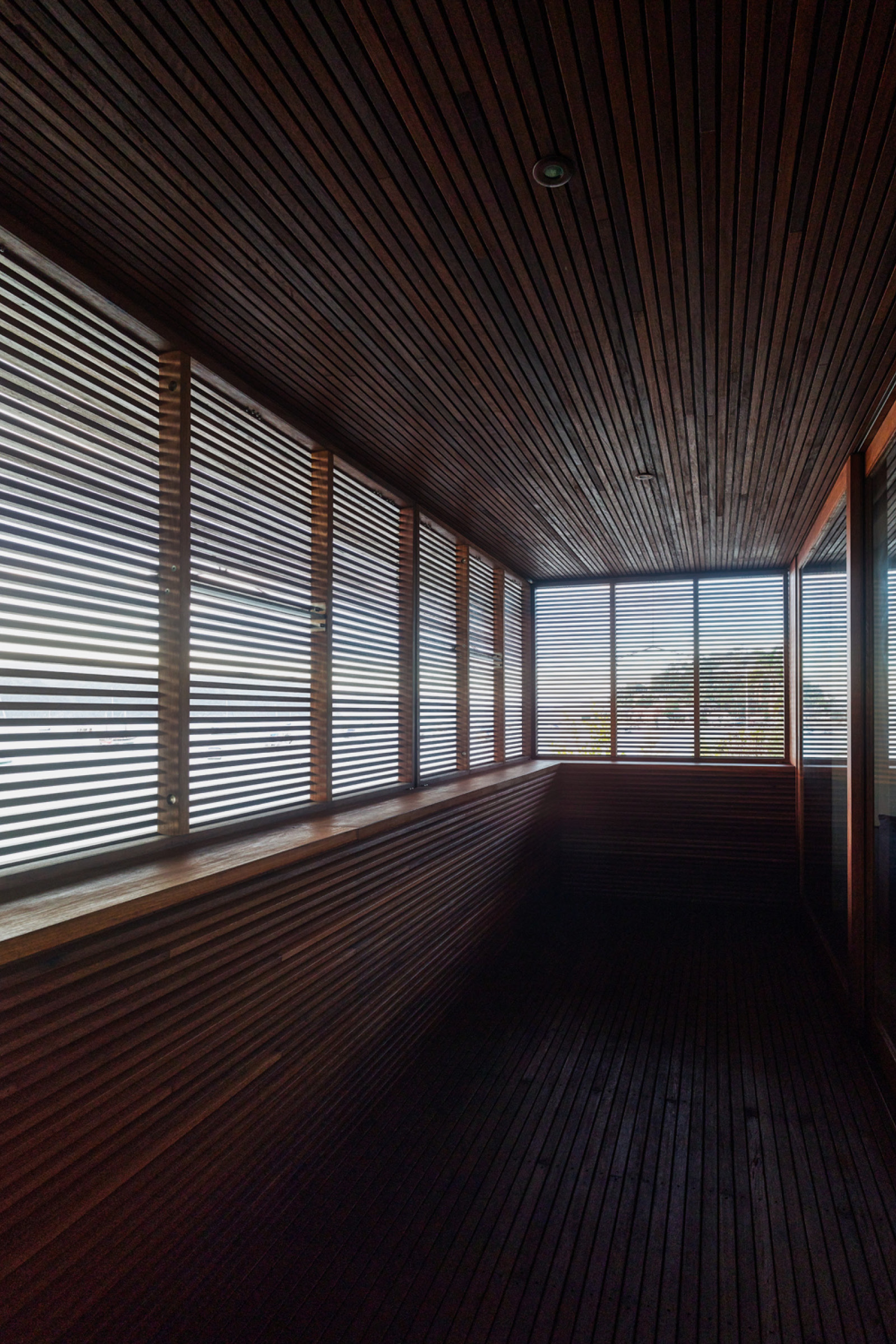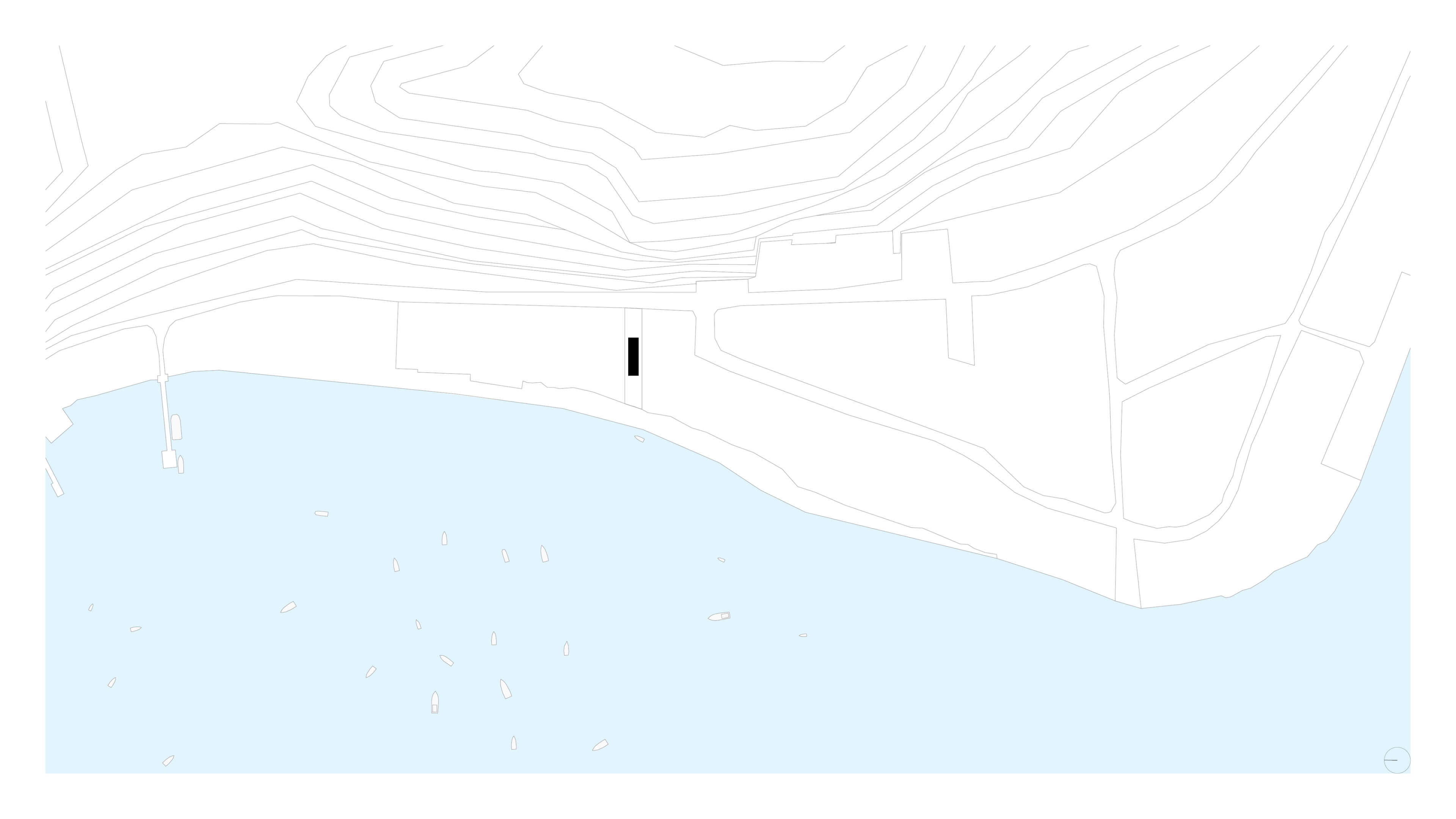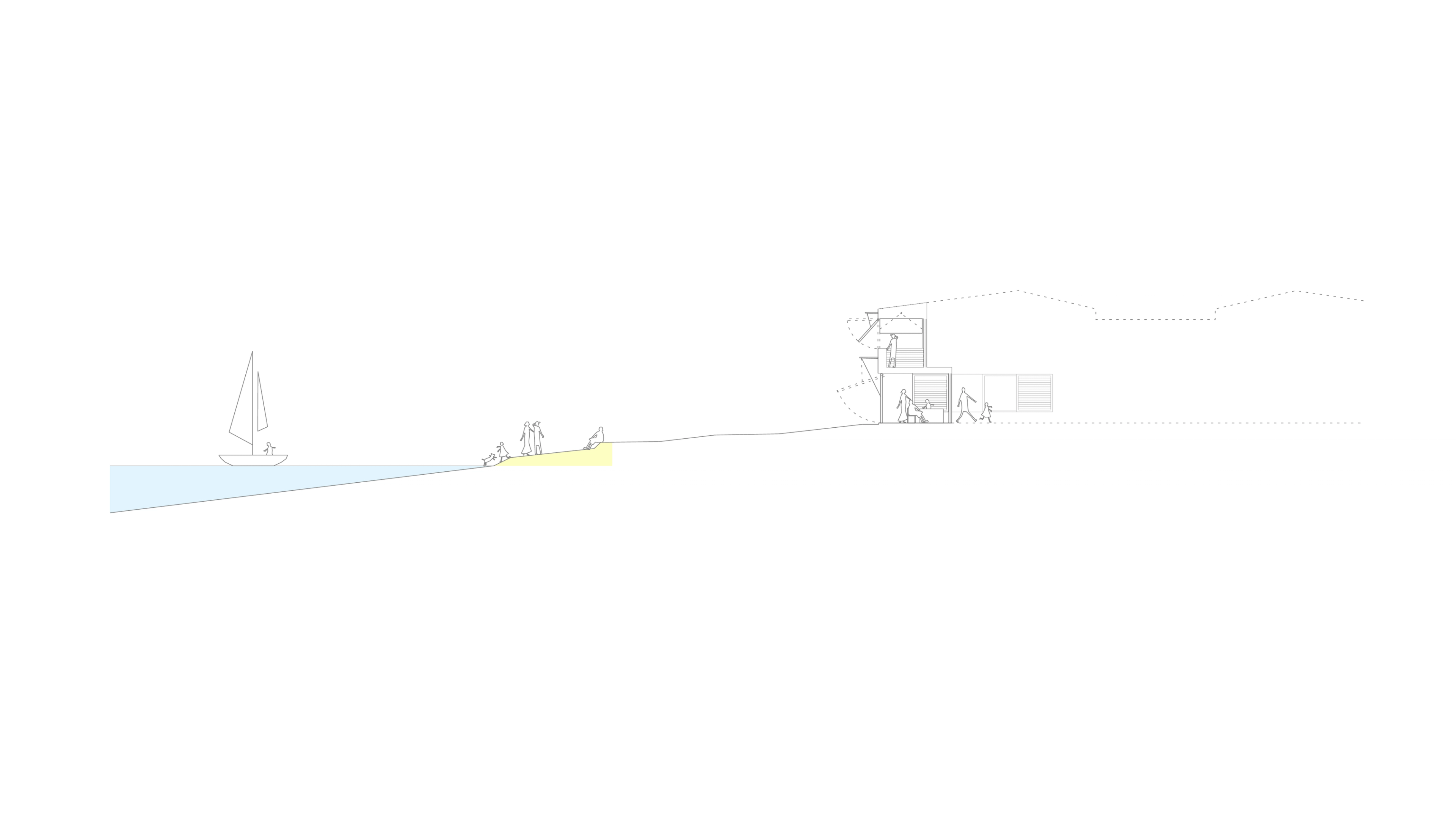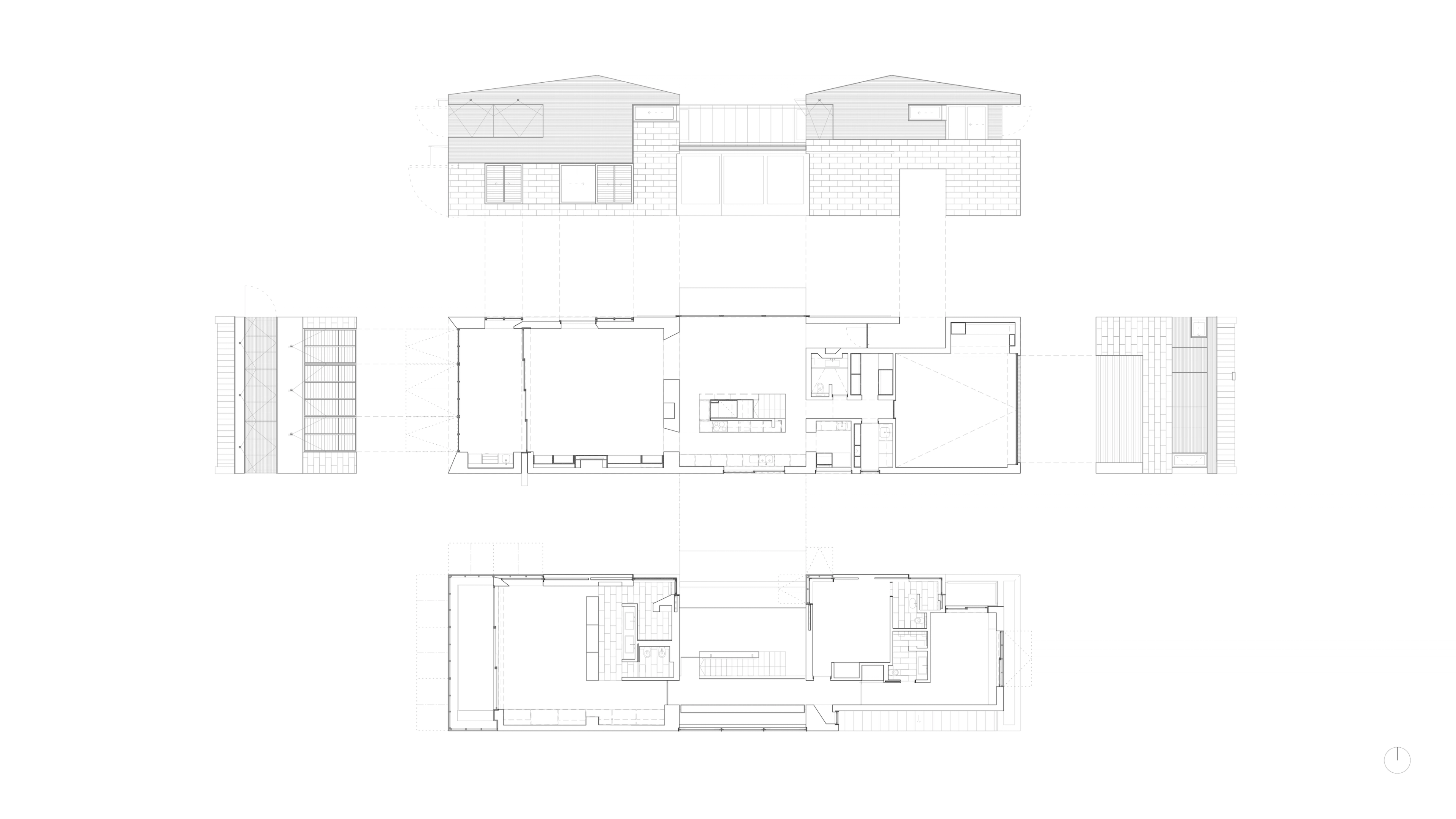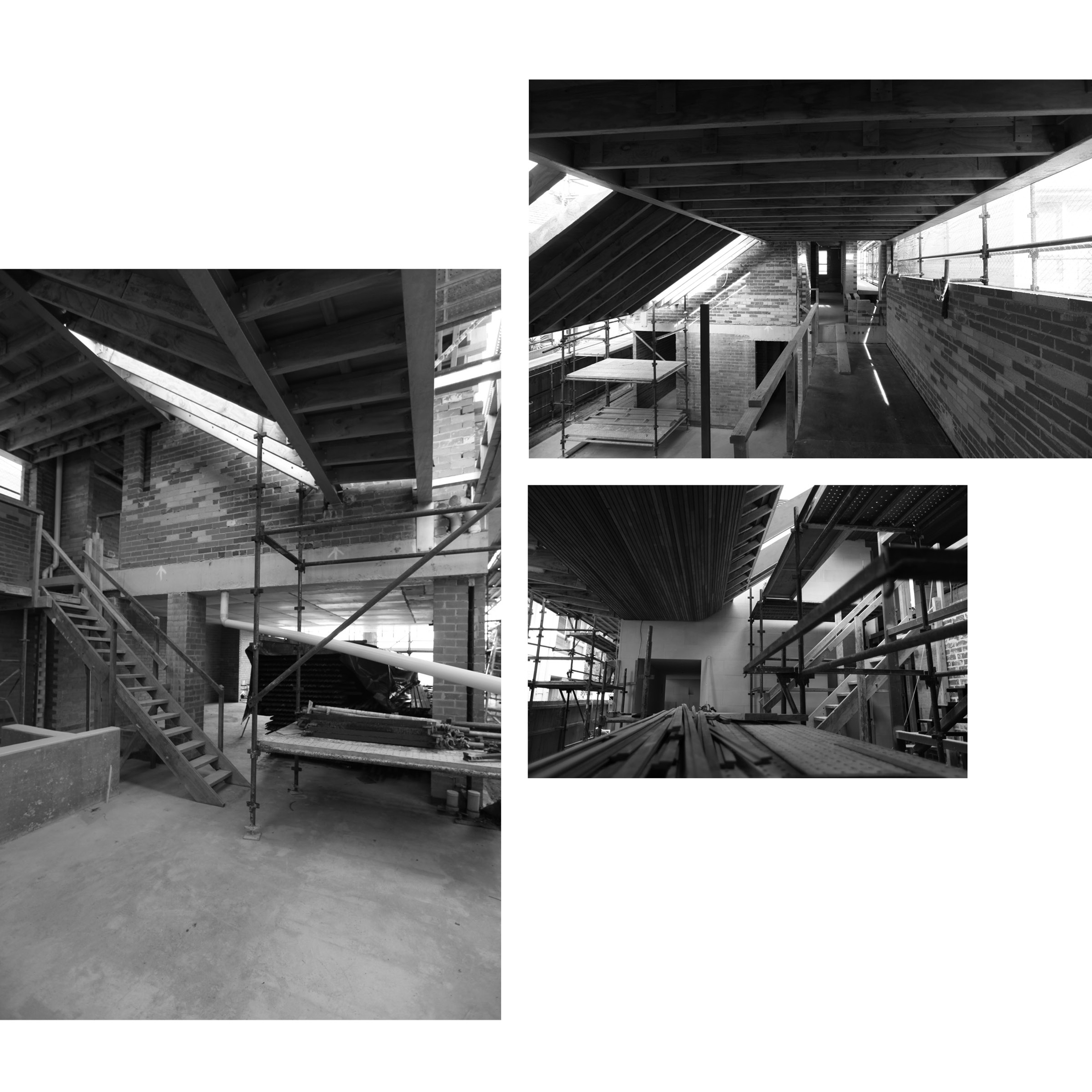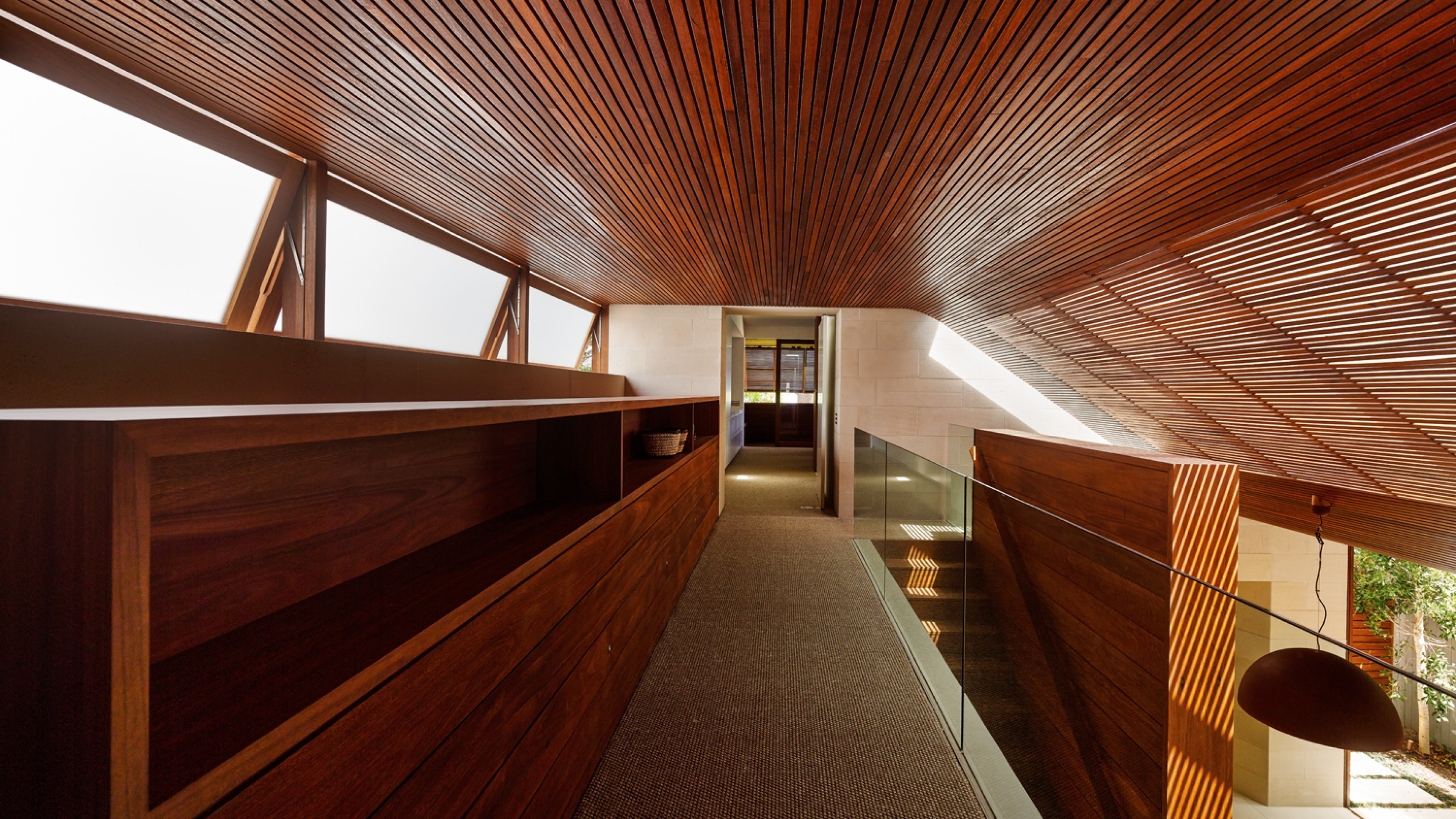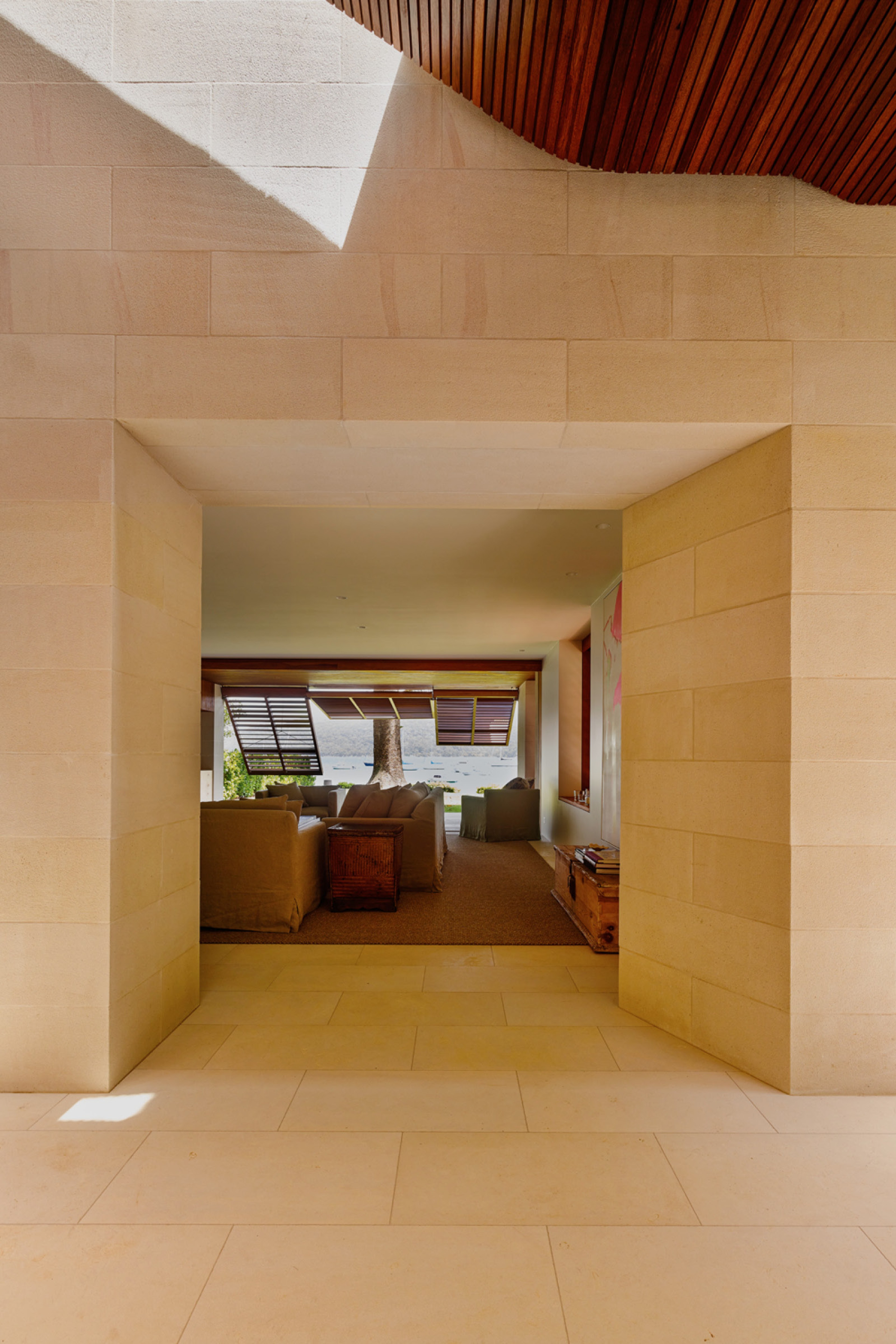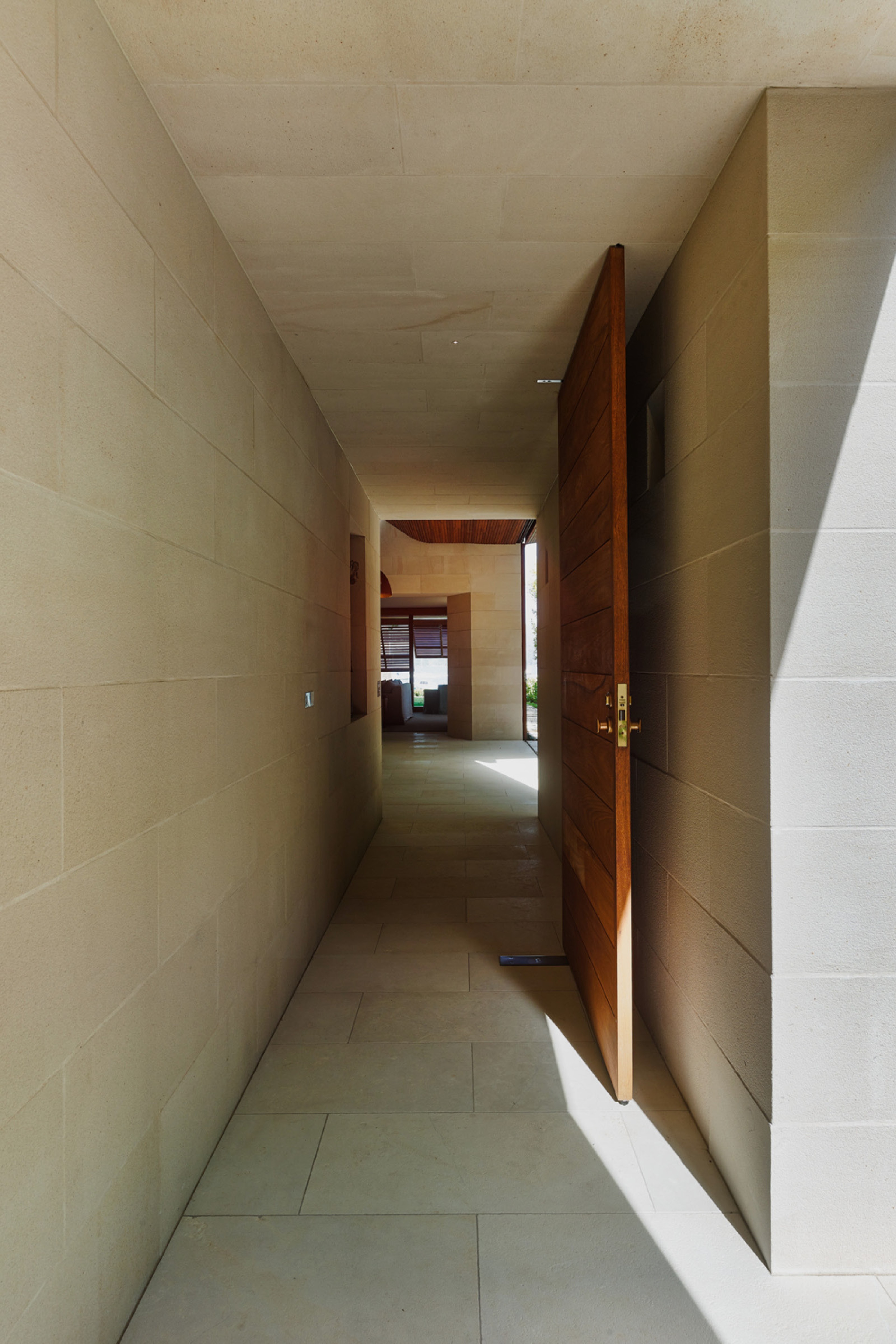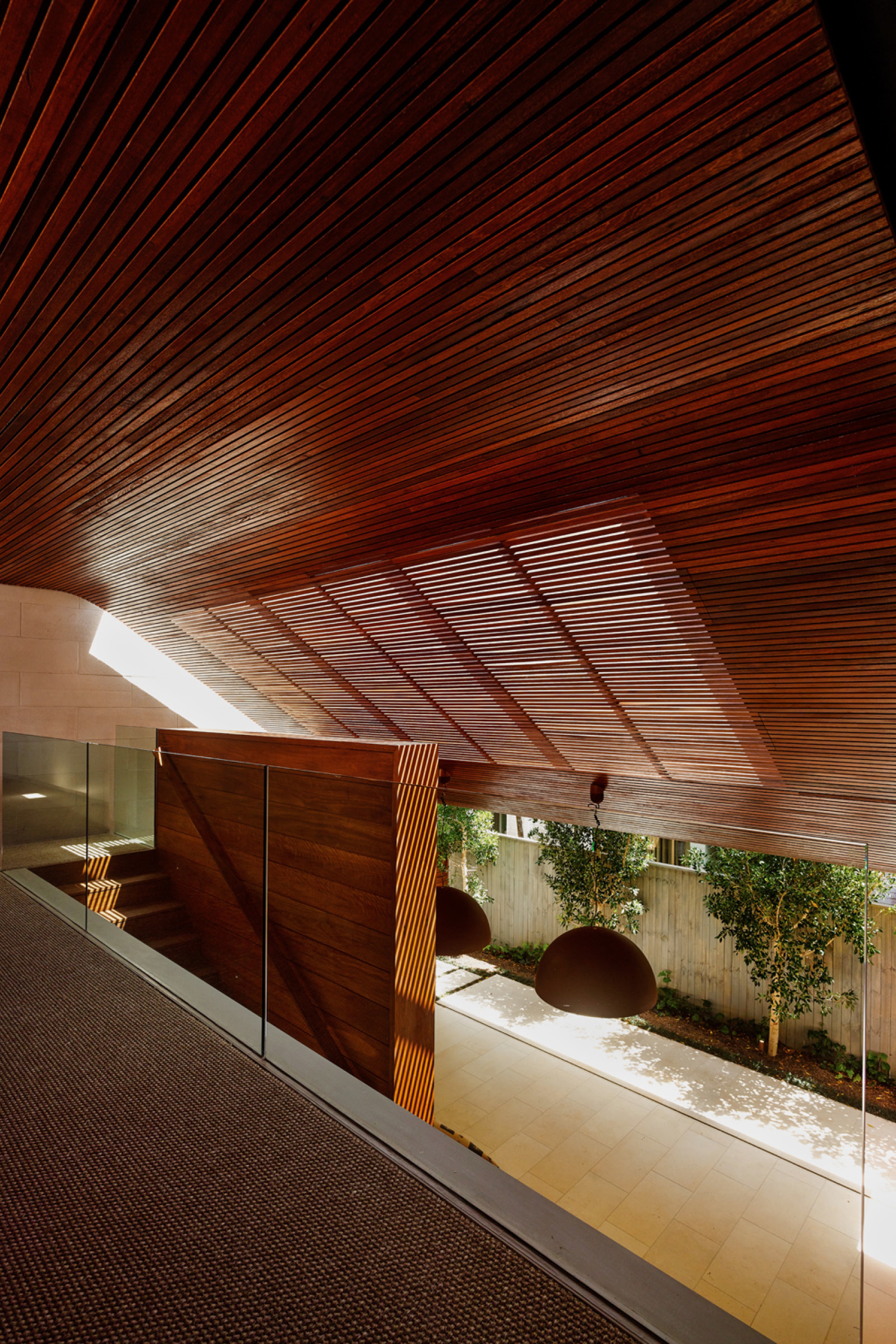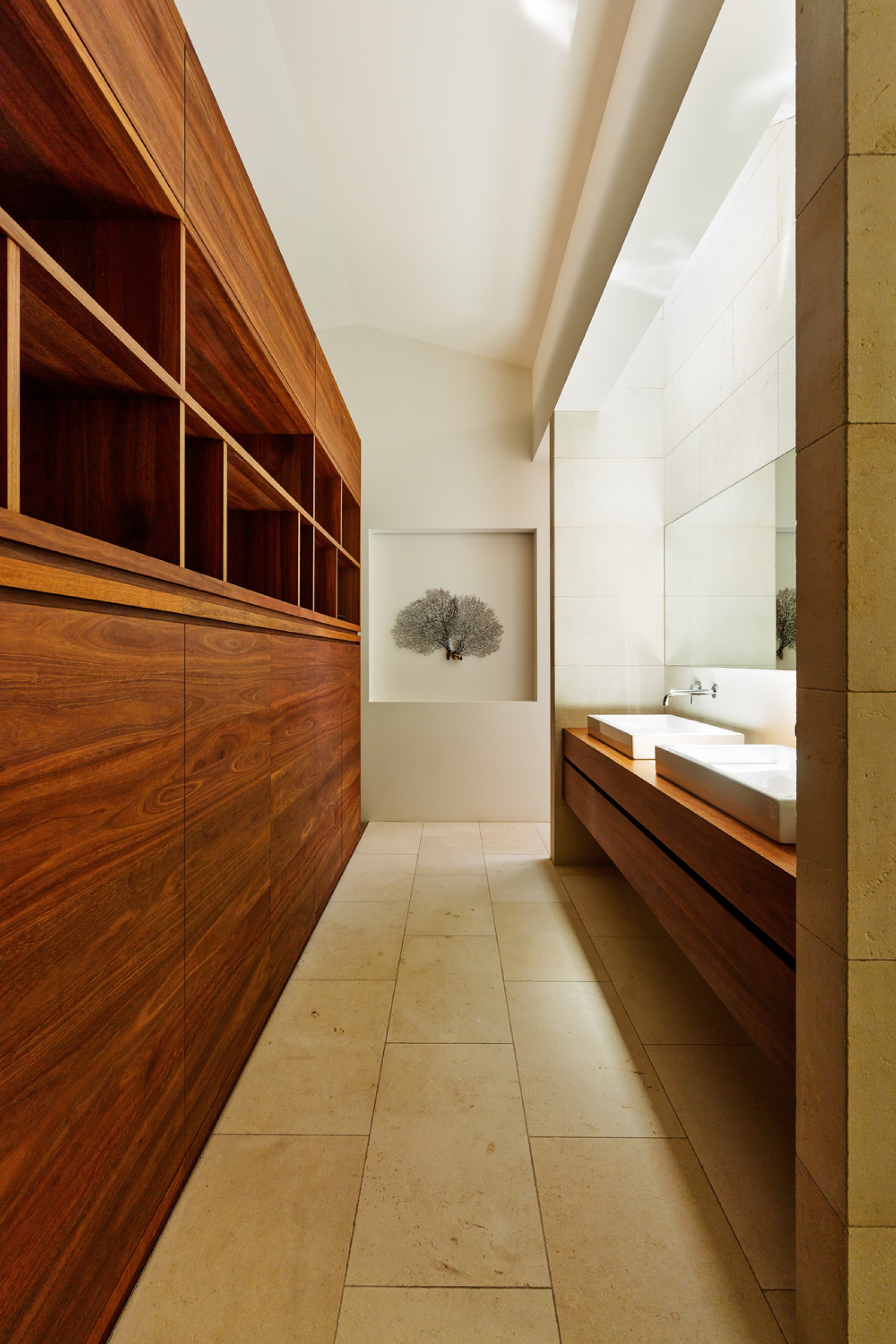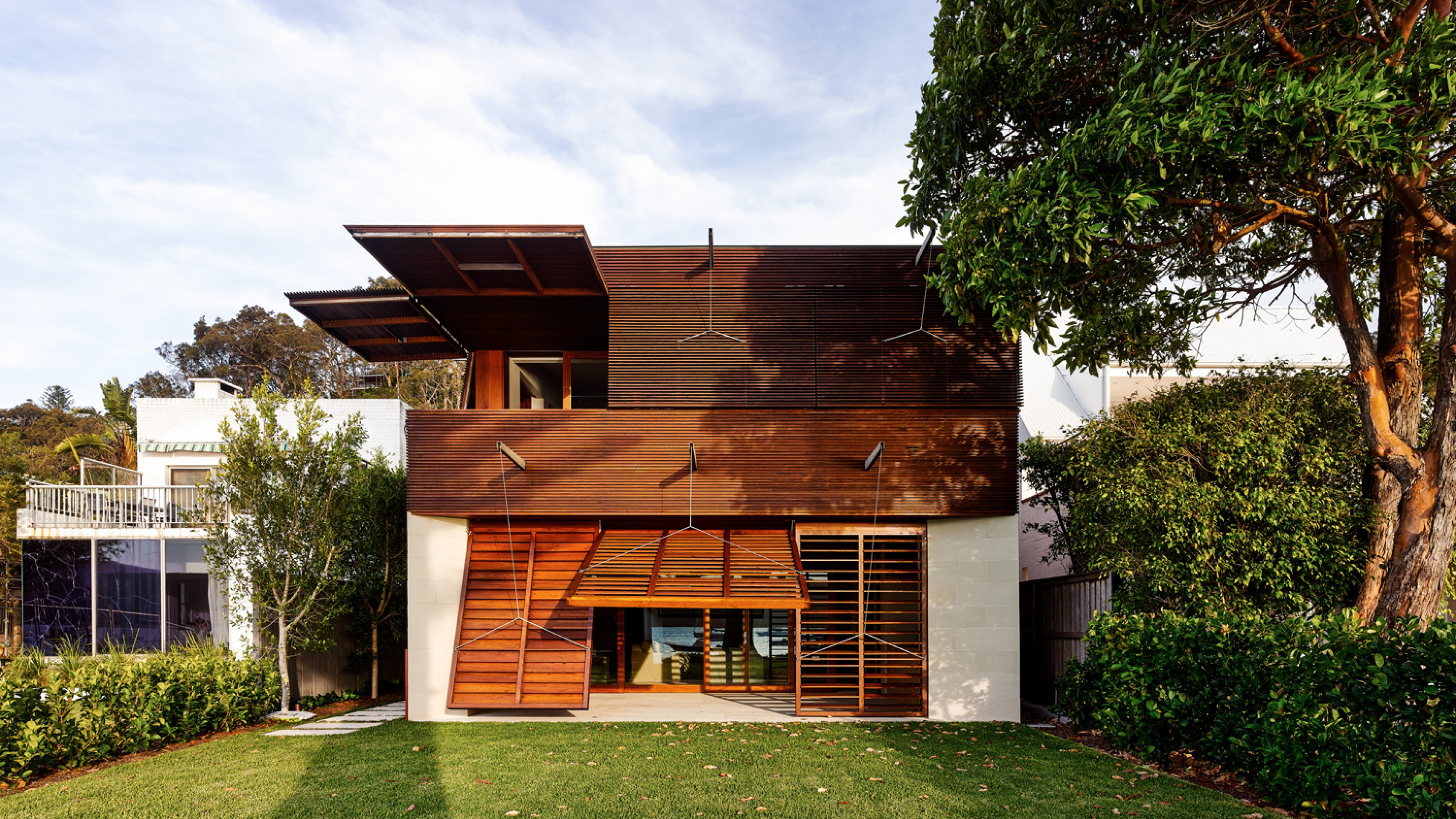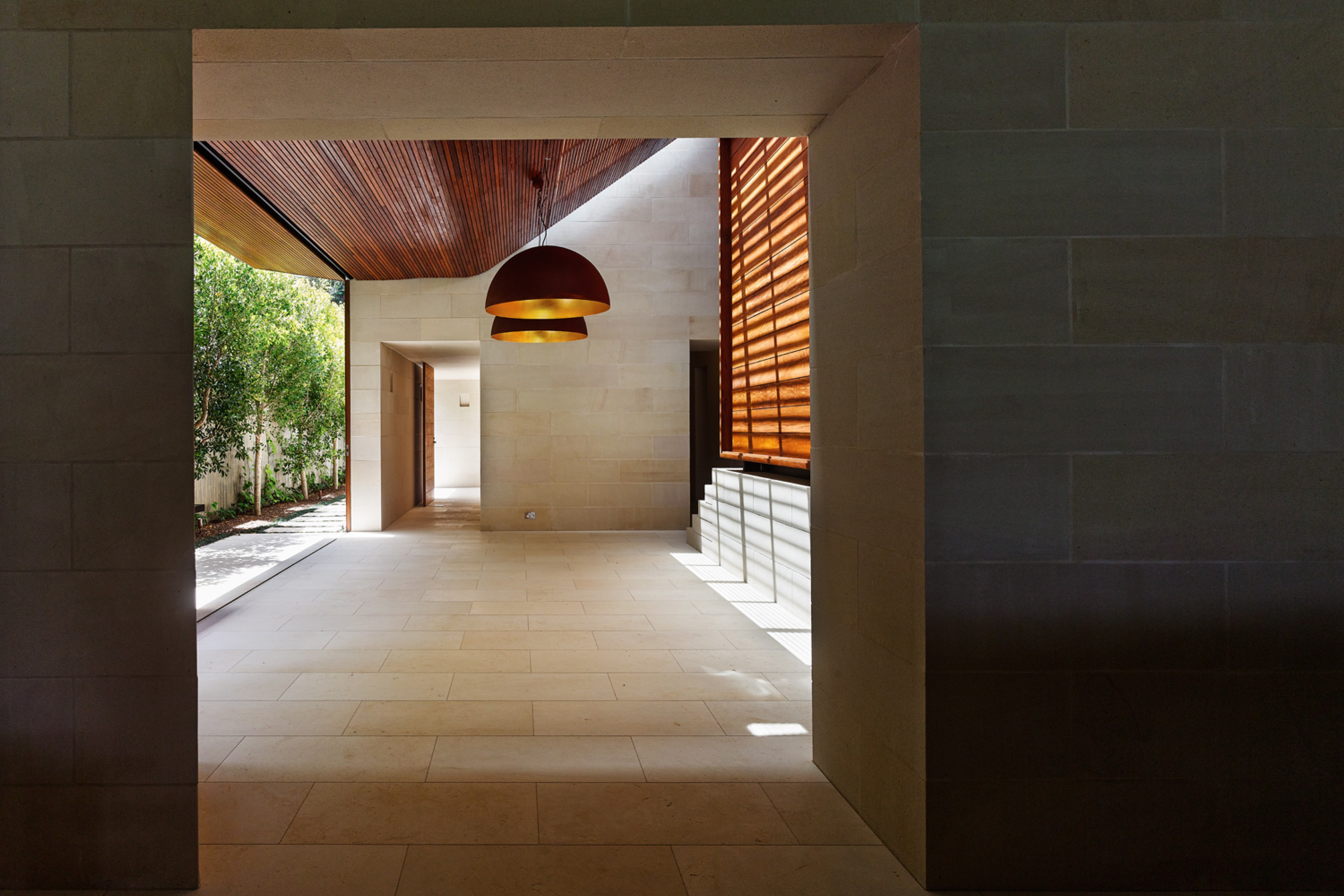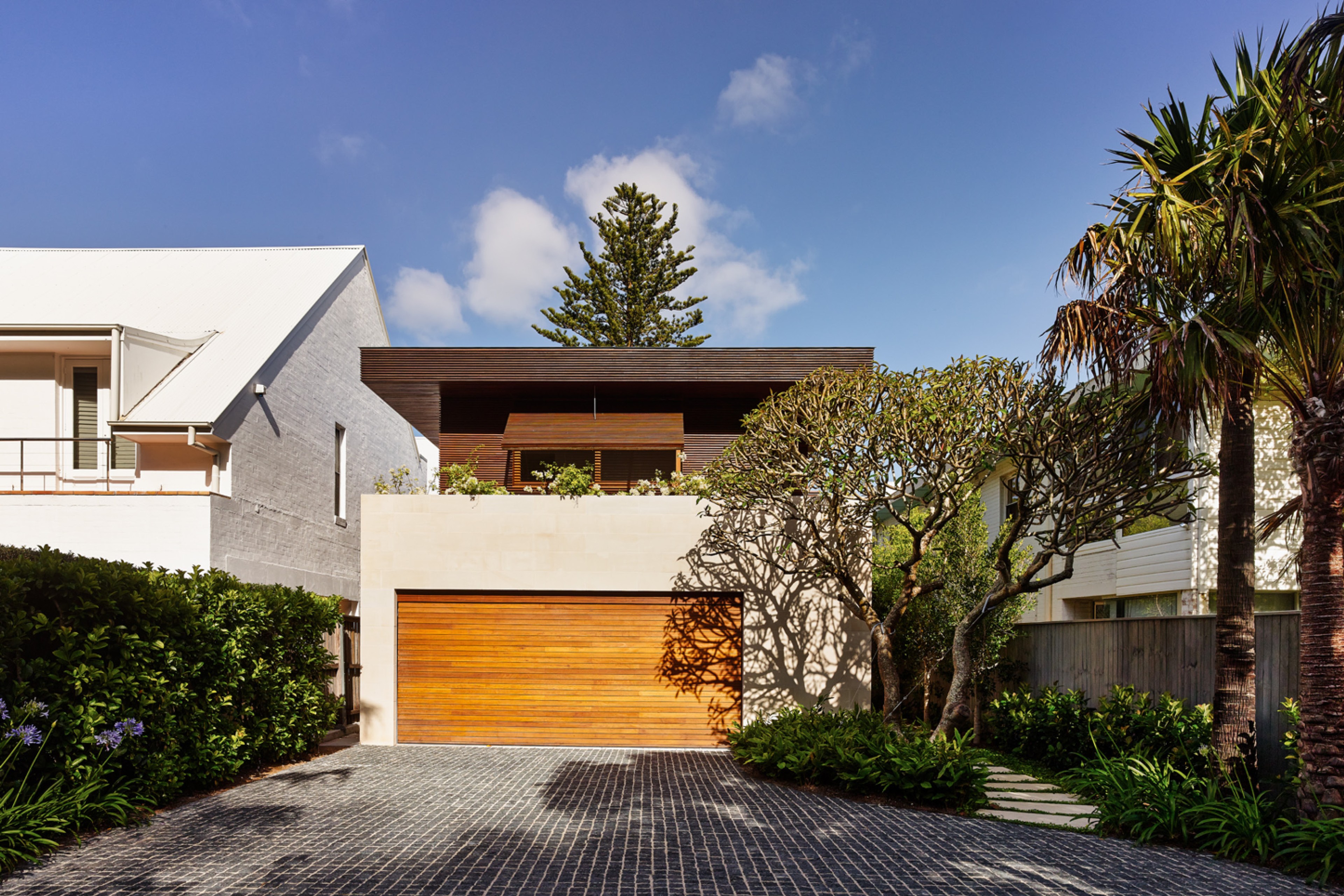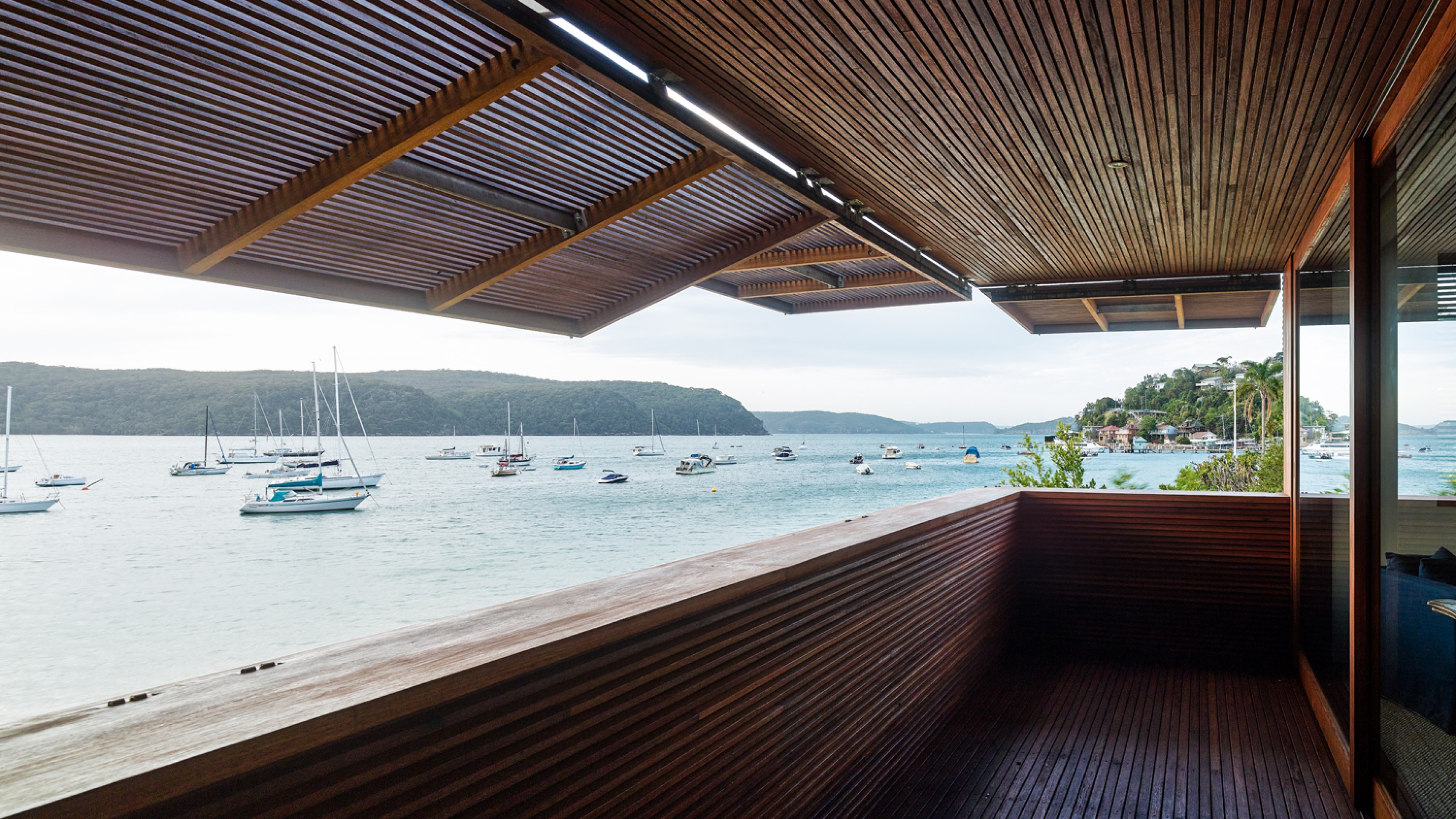RE-IMAGINING THE FAÇADE AS A PUBLIC/PRIVATE THRESHOLD
Operable Facade
Location
Pittwater, Sydney
Completion
2012
Type
Residential
Traditional Custodians
Kuringgai
Our brief for the Pittwater house was to create a beach house for a retired couple that was large enough for their extended family of children and grandchildren to visit and stay. The site is located on the thin, flat strip of land that runs between the ridgeline escarpment and Pittwater, creating a dual public face – a public street frontage and a public beach frontage.
Conscious that contemporary multi-generational beach houses often appear very bloated next to the small footprint weekenders of the past, our strategy was to divide the footprint of the house into two identical pavilions addressing either the street or the beach, connected by a north facing double height indoor/outdoor room that housed the kitchen and dining room. This manipulation of the building form halved the perceptible size of the house as viewed from the public realm of the street or the beach.
In response to the request for privacy, particularly on the beach front façade, we developed a thickened threshold characterized by an operable façade borrowing the functional technology of the many boats adjacent the house. Using a rope and pulley system on stainless steel outriggers driven by linear actuators, the façade can be opened and closed to provide infinite combinations of shade, exposure and privacy in relation to the western orientation and views over Pittwater.
The upper level timber is a customised profile of recycled tallowwood designed to integrate the profile of the screens with the profile of the cladding. Developed in collaboration with Australian Architectural Hardwoods, a series of profiles were tested through a sampling process before finalising the profile design to create a deep shadow similar in appearance to the screens while shedding water off the façade joints.
In developing the material character of the house we attempted to give each of the two materials used – timber and stone – their own distinct monolithic quality to heighten the simple play on the layering of the early vernacular beach house. The monolithic quality of the stone was developed through the use of thick, carefully shaped thresholds that imbued the stone with a carved quality. The monolithic quality of the timber was developed through a carefully orchestrated relationship of timber elements where there was no visible distinction in language between a customized recycled tallow wood cladding, screen system, and doors and windows.
Credits
Team
Andrew Burges, Celia Carroil, Louise Lovmand, Anna Field, Sofia Husni, Laure Vandenbroucke
Builder
Ant Building
